MIT Technology Review ranked TikTok’s recommendation algorithms amongst its 10 Breakthrough Technologies for 2021 — on par with mRNA vaccines and GPT-3 natural language processing models. Why? “Because the algorithms that power TikTok’s ‘For You’ feed have changed the way people become famous online”. With TikTok’s rise as a prominent platform for music discovery, the short-video format and viral challenges have become a staple of many music marketing campaigns — yet, up to a few months ago, there was little concrete insight into how the TikTok algorithm actually works. Today, we bring you the latest guide to the TikTok algorithm, sourced by the recently leaked internal documents.
Last December, the New York Times got their hands on an internal company document designed to break down the main principles of TikTok’s recommender system for the company’s employees. Surprisingly, the document didn’t reveal anything groundbreaking about the inner workings of the tech. The TikTok recommendation engine is, in fact, very similar to other recommender systems of YouTube or Spotify. What sets TikTok recommendation algorithms apart is the carefully designed consumption flow and the product decisions the company made to favor small creators and avoid content repetitiveness — as well as the enormous volumes of data at their disposal.
In this piece, we’ll dig down into how the short-form video recommendation works on TikTok, reviewing the main insights uncovered by the New York Times — and what it means for artists and their teams looking to optimize their discoverability on the platform.
What’s the purpose of the “For you” algorithm?
First things first, let’s start with TikTok’s goals regarding their recommendation engine. With the “For You” section front and center of the mobile app, the TikTok recommender system powering the page becomes, essentially, the company’s core offering. As such, the notorious "TikTok algorithm" is driven directly by the key business goals: growing the platform (i.e. optimizing for DAU, or Daily Active Users) and maintaining high levels of user engagement (i.e. optimizing for retention and time spent on the platform), as suggested by this diagram provided by the NY Times below. A kind of self-fulfilling prophecy quickly emerges: the more data TikTok collects about its users, the more data it has to analyze, the better it gets at recommending new content and attracting new users.

Source: The New York Times
Interesting to note that content quality features as one of the platform’s prominent sub-goals, while one could argue that what TikTok labels “creation quality” is less about the actual quality of the video, and more about creator's commitment to their channel — and, by extension to TikTok itself. The "creation quality" is made up of:
- Publish rate: how often does the creator upload new videos? The more frequent/regular the uploads — the better.
- Creator Retention: how many viewers make it through to the profile to watch other videos by the same creator.
- Creator Monetization: Is the profile monetized? Does the creator leverage all the TikTok features (e.g., live streams & donations)?
Behind the algorithm: how recommendation and video discovery works on TikTok
Just like DSPs, social media platforms use a combination of both content and behavioral approaches to power their recommendation systems:
- By content tagging: “I think you should watch that “Yoga Challenge” video because you watched four similar videos through to the end (and maybe after that one, I’ll stop to avoid repetitiveness).”
- By behavioral similarity: “I think you should watch that vegan recipe video because most people who watched “Yoga Challenge” videos also engaged with that video.”
The exact way the platforms describe videos and analyze watching patterns remains the “secret recipe” of respective recommendation engines — and the massive component of their overall efficiency. To serve a relevant set of recommendations to a specific user, TikTok combines several independent yet interwoven algorithms. Let’s break down how the process works:
1. Analyzing and Auditing New Content Uploads
When users upload a video on TikTok, the system starts by automatically classifying its contents using the footage itself and metadata such as:
- Captions
- Video Format
- Hashtags
- Music and sounds
- Creative and voice effects used
Computer Vision and Natural Language Processing algorithms then run further analysis on the video to arrive at a more accurate understanding of its most prominent themes and contents:

In addition to collecting the data describing the uploaded content, these algorithms also tag the videos they deem insensitive or suspicious — which then go through a manual review to verify the presence of harmful content. If the video passes the automatic test or gets manually approved, it is then served to a small batch of users to gather a first round of feedback.
If the initial feedback is good (i.e., good play-through rates, rewatch rates, like/comments rates) and the video creator has good credibility, the video gets pushed to a broader audience. Then, the process repeats all over again: the video’s performance is measured, and if the engagement remains high, the video goes on the third round of recommendation — and so on. If the video performs poorly on any of the consecutive recommendation rounds, the recommendation is put on hold. To keep creators motivated to churn out more content, however, videos that maintain a good level of engagement on their own (while not being actively “promoted” by the recommender system) can get a second chance with the algorithm and make it onto another round of recommendations.
2. Developing User Profiles
As mentioned above, users’ tastes and video quality are assessed based on user interactions with suggested videos. The user feedback is split into two distinct categories:
- Explicit or active feedback: likes, comments, follows.
- Implicit or passive feedback: playtime, completion rate, and rewatch rate.
Out of all of the feedback signals, completion and rewatch rates have the most impact when calculating the overall video score.
A side note on shares: shares are often accounted for in recommender systems. However, in the case of TikTok, it seems like shares don’t play a significant role in assessing the video’s performance. That is perhaps for a good reason — on average, shares are much less common than likes and comments, and as we know, more data = better recommendations.
3. Generating and Ranking Video Recommendations
Recommenders can start assuming user preferences with as little data as interactions with eight short videos. The more interactions users have with the system, the better their recommendation profile gets. Device and account settings like language preferences, country setting, and device type also weigh in defining user profiles — especially when dealing with the cold start problem, when little is known about the user’s preferences and habits.
The recommender system predicts a score for each candidate video based on the user’s interaction history. The more likely you are to like, comment, and play the video until the end, the higher the score. Then, videos with the best score make it to your “For you” feed. Likewise, if you’ve watched videos from a particular creator until the end, their video scores will increase. The intuition here is that you’re more likely to watch a video from an author you’ve already watched because you’ll have the “cultural background” to understand the references.
Guide: How to optimize your videos for the TikTok’s algorithm
Getting into the video creator space requires quite a commitment. TikTok is generally pretty demanding in terms of time investments if you want to “make it” on the platform. I usually advise artists and teams to focus on one or two social media platforms to maintain a consistent presence. It’s better to do one space right than spreading yourself too thin across multiple platforms.
If you, however, use or plan to use TikTok as a vehicle for music promotion, here’s a set of quick tips for you to keep in mind.
Optimize for video and metadata analysis
An algorithm will analyze your content uploads and all the metadata you submit. The easier you make that analysis for TikTok, the better. Provide detailed captions and consistent hashtags. As for the videos you produce, try to keep the footage well-lit (unless you want to project heavy, dark moods), and choose your background wisely — all items that make it to the video will be automatically analyzed.
Find your subculture
If you’re starting out, try not to aim too broadly. Instead, target your content to a specific community and try to connect with it. Think #DarkAcademia, #ZombiePunk, #Egirl, #WitchTok, etc. But remember to be authentic :)
Design your videos specifically for TikTok
You can’t use the same sequence for TikTok, Youtube, and Canvas on Spotify. The first seconds are critical for short-form videos, and your video has to be engaging right from the start. Text highlights are also essential to keep the video engaging even with the sound off.
Feature your music
Obviously, who is better suited to showcase your work? Short-form videos on TikTok are not Instagram stories, though — recording a loop in your studio most likely won’t be enough. Instead, you should invest in crafting your content and tailoring it for TikTok audiences that won’t be familiar with you or your previous content most of the time.
Publish regularly
Like any other platform, people will only follow if you show up regularly and if you’re consistent with the type of content you deliver. So regular, weekly publications are a must — and if you’re serious about making it on the platform, it’s best to post at least daily.
Study your analytics and optimize for high rewatch and completion rates
TikTok Analytics provides plenty of insights on how your content performs and what audience it is served to. Pay attention to what resonates best with your community, and check your stats to understand what works and what doesn’t — and why. If you're curious about some of the more advanced TikTok metrics and you can calculate them in order to assess how engaging is your creator profile (or your TikTok sounds) check out my recent article on TikTok engagement rates.
Leverage all TikTok capabilities
It is a general rule of thumb that any recommender system will favor the content that uses all the features offered by the platform. On TikTok, that means taking advantage of their Livestream donations and other monetization capabilities — especially since TikTok verifiably rewards creators that are more committed to the platform than others.
Finally, suppose you’re a musician who doesn’t intend to get into TikTok content creation but would still like to leverage the platform’s audio capabilities. In that case, the one thing you can and should do is to pick your TikTok sound extract very carefully when uploading to TikTok through your distribution platform. In that scenario, your goal is to keep it open-ended so that creators can find different ways to engage with the sound. And again, the very first seconds matter a lot — while no one can predict the music’s virality, you can still make sure that the deck is stacked in your favor.















